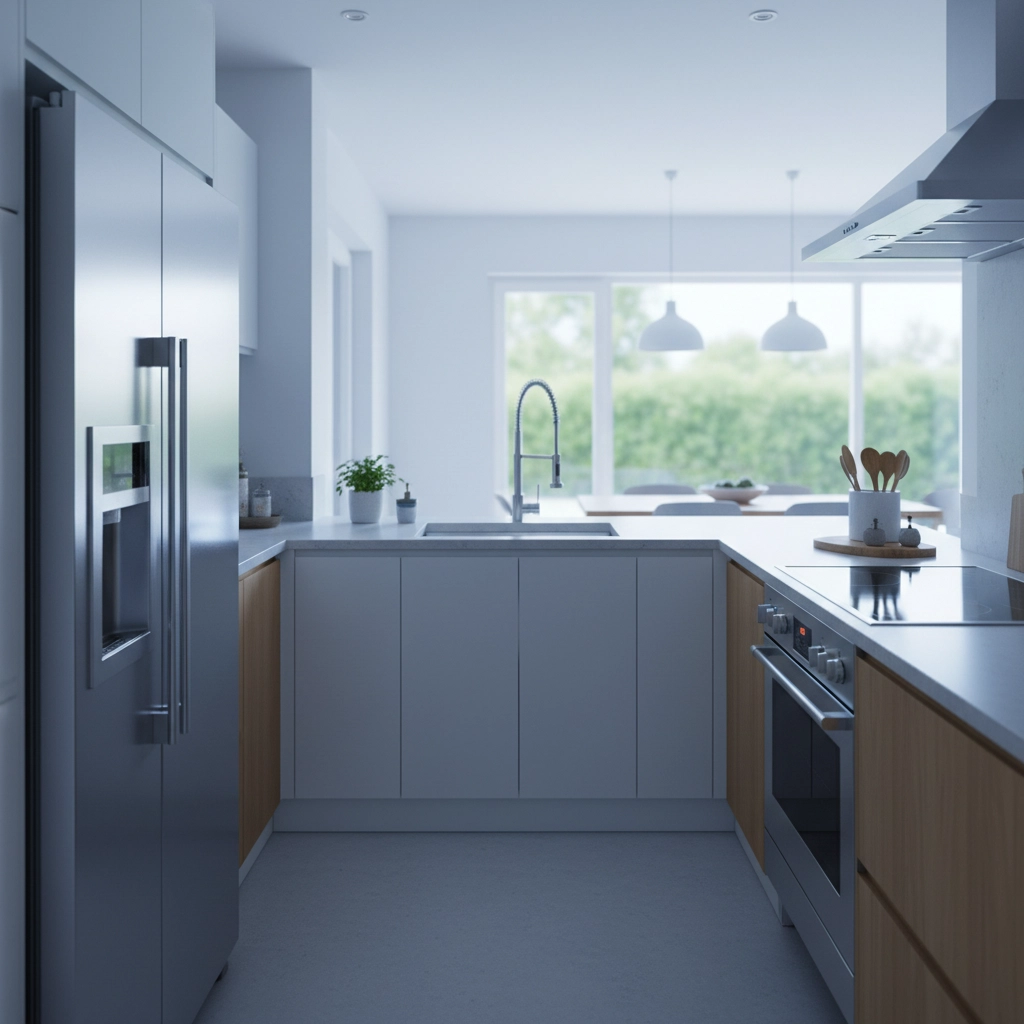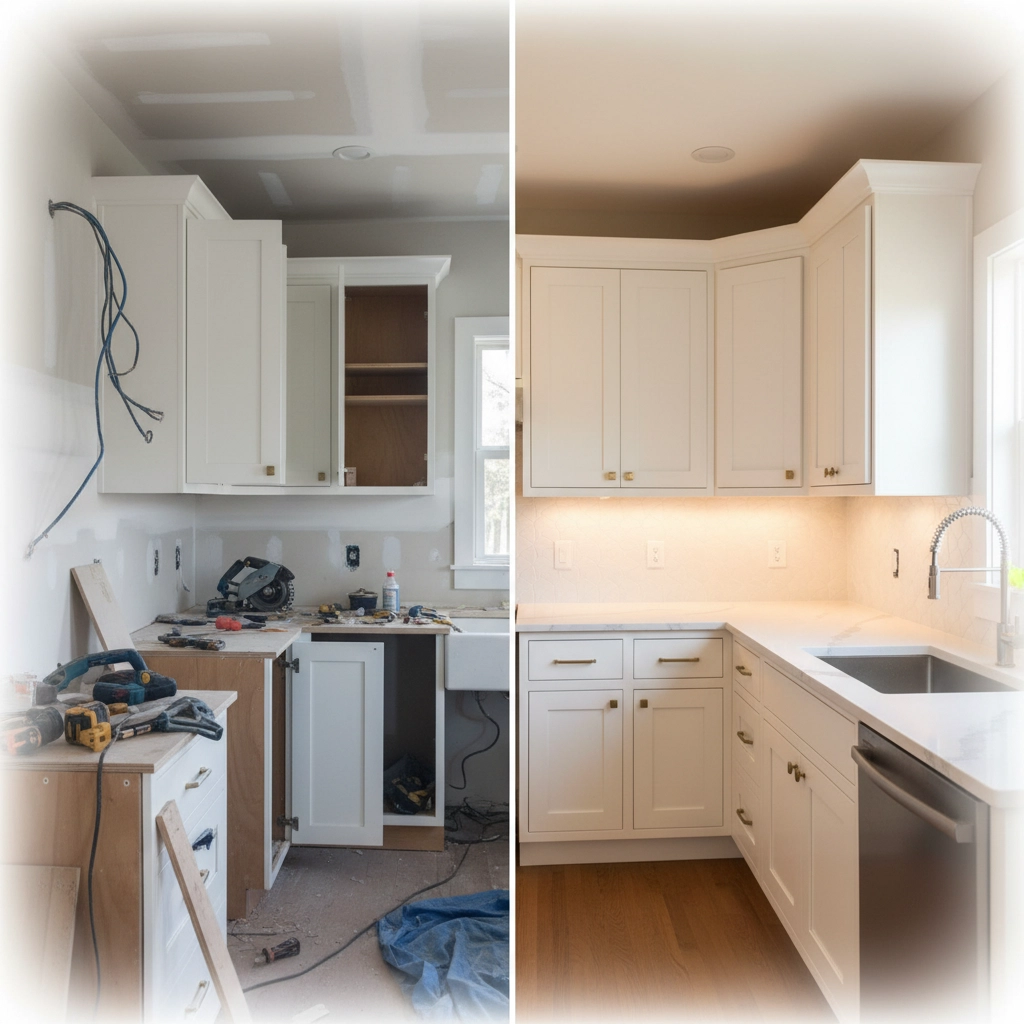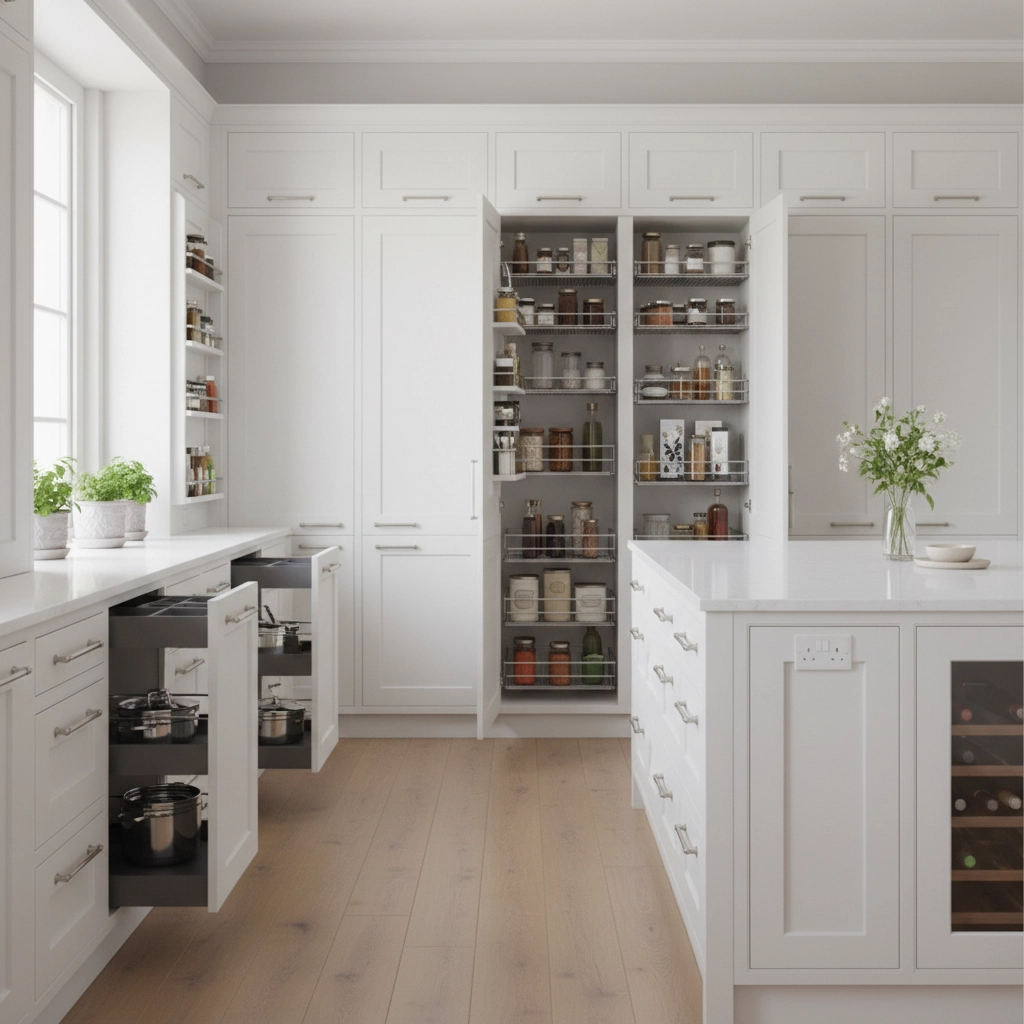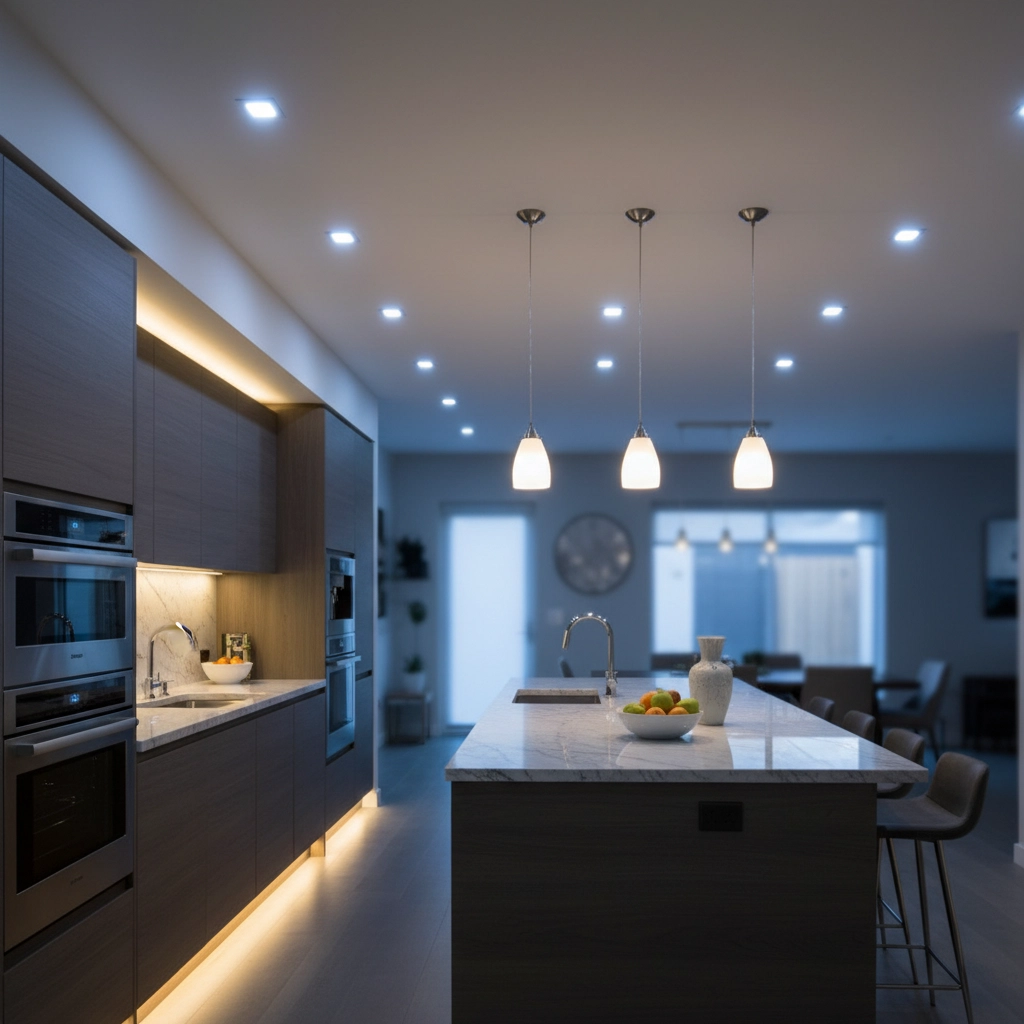7 Kitchen Remodeling Mistakes You're Making (and How to Fix Them)
- RRGC

- Oct 4
- 6 min read
Kitchen remodeling is one of the most exciting home improvement projects you can tackle, but it's also one of the most complex. After years in the construction business, I've seen homeowners make the same costly mistakes over and over again. The good news? These mistakes are totally avoidable when you know what to look out for.
Whether you're planning a complete kitchen overhaul or just updating a few key elements, avoiding these seven common pitfalls will save you time, money, and a whole lot of headaches down the road.
1. Putting Looks Before Function
This is probably the biggest mistake I see homeowners make. They fall in love with a gorgeous kitchen they saw on Instagram or Pinterest, then try to recreate it without thinking about how they actually use their space.
Sure, that massive waterfall island looks incredible, but if it blocks your kitchen workflow or leaves you with no room to move around, you'll regret it every single day. A beautiful kitchen that doesn't work for your lifestyle is just an expensive mistake.
How to Fix It: Start with function, then make it beautiful. Think about how you cook, where you prep food, and how your family uses the kitchen. The classic work triangle (connecting your stove, sink, and refrigerator) still makes sense because it minimizes unnecessary steps while you're cooking.
Plan your storage around the items you actually use. Keep your everyday dishes near the dishwasher, store pots and pans close to the stove, and make sure your most-used appliances have dedicated, easily accessible spots.

2. Trying to DIY Everything
Look, I get it. Those home improvement shows make it look so easy, and YouTube tutorials can make anyone feel like a pro. But here's the reality: kitchen remodeling involves complex electrical work, plumbing, permits, and structural considerations that can be dangerous if handled incorrectly.
I've seen too many "weekend warrior" projects turn into expensive disasters. What starts as a cost-saving measure often ends up costing more when you have to call in professionals to fix DIY mistakes.
How to Fix It: Know your limits. You might be handy with painting or installing cabinet hardware, but leave the big stuff to licensed professionals. Electrical work, plumbing modifications, and structural changes should always be handled by experts who understand building codes and safety requirements.
If budget is a concern, focus your DIY efforts on finishing touches like painting, installing cabinet pulls, or organizing your new storage spaces. You'll still get that satisfaction of hands-on involvement without the risk.
3. Skimping on Storage and Counter Space
This mistake will haunt you every single day. I can't count how many clients have told me their biggest regret was not planning for enough storage or workspace. You think you have enough, but once you start living in the space, reality hits hard.
Most people underestimate how much stuff they have and how much counter space they actually need for daily food prep. Plus, families tend to accumulate more kitchen items over time, not less.
How to Fix It: Go bigger than you think you need. Extend cabinets all the way to the ceiling – that extra storage is golden, and it makes your kitchen look more custom and expensive too.
Consider adding an island or peninsula if your space allows. It's not just extra counter space; it's also additional storage underneath. Think about including pull-out drawers in lower cabinets, lazy Susans in corner cabinets, and dedicated storage for small appliances so your counters stay clear.

4. Getting the Lighting All Wrong
Poor lighting is one of those mistakes that might not seem like a big deal at first, but it'll drive you crazy over time. I see kitchens with just one overhead light fixture casting shadows everywhere, or homeowners who go overboard with decorative lighting that looks pretty but doesn't actually help you see what you're doing.
How to Fix It: Layer your lighting like a pro. You need three types: general lighting for overall illumination, task lighting for specific work areas, and accent lighting to create atmosphere.
Install under-cabinet lighting to eliminate shadows on your work surfaces. Add pendant lights over islands or peninsulas. Consider recessed lights positioned slightly in front of where you'll be working, not directly overhead. And don't forget dimmer switches – they let you adjust the mood from bright and functional to warm and cozy.
5. Measuring Mishaps with Appliances
This seems like such a basic thing, but you'd be amazed how often it goes wrong. I've seen brand-new refrigerators that stick out awkwardly into walkways, dishwashers that can't open fully because of poorly positioned cabinets, and ranges that don't fit properly in their designated spaces.
The problem usually happens when homeowners fall in love with specific appliances without checking if they'll actually work in their planned layout.
How to Fix It: Choose your appliances early in the design process, not as an afterthought. Get exact measurements, and remember that appliances need clearance space to operate properly. That refrigerator door needs to swing open without hitting a wall or cabinet.
Also, think about how appliances open and close. Can you access your dishwasher when someone's standing at the sink? Will your oven door have enough clearance when it's open? These details matter for daily functionality.

6. Creating Traffic Jams
Cramped kitchens are miserable to work in, especially if you're sharing the space with family members. I've seen beautiful renovations that feel claustrophobic because there's just not enough room to move around comfortably.
This problem gets worse when you don't consider how cabinet doors and drawers open, or how much space appliances need when they're in use.
How to Fix It: Plan for at least 42-48 inches of space between facing cabinets or appliances. In smaller kitchens, you can get away with 36 inches minimum, but more is always better.
Think about your kitchen's traffic patterns. Where do people naturally walk through? Make sure major pathways stay clear. And when you're planning cabinet and appliance placement, literally walk through the motions of opening doors and drawers to make sure nothing conflicts.
7. Budget Blowouts and Poor Planning
This might be the most painful mistake because it affects everything else. Going significantly over budget can force you to make compromises you'll regret later, or worse, leave your project unfinished.
The problem usually starts with unrealistic budgeting or failing to account for unexpected issues that come up during renovation. Old houses especially love to surprise you with hidden problems once you start tearing into walls.
How to Fix It: Be realistic about costs from the start. Get detailed quotes from contractors, and always add a contingency fund of at least 15-20% for unexpected expenses. Trust me, something will come up.
Prioritize your spending on the things that matter most to your daily life. High-quality cabinets and appliances are worth the investment, but you might be able to save on decorative elements that can be upgraded later.

Planning Makes Perfect
The common thread running through all these mistakes is the same: lack of proper planning. Rushing into a kitchen remodel or making decisions on the fly is a recipe for regret.
Take your time in the planning phase. Live in your current kitchen for a while and really pay attention to what works and what doesn't. Think about your family's specific needs and habits. A family that rarely cooks might prioritize different features than one where someone's always whipping up elaborate meals.
If you're feeling overwhelmed by all the decisions involved in a kitchen remodel, that's completely normal. This stuff is complicated, and there are a lot of moving parts to coordinate. Professional kitchen renovation planning can help you avoid these expensive mistakes and create a space that truly works for your lifestyle.
Remember, your kitchen is the heart of your home. It's worth taking the time to get it right. By avoiding these seven common mistakes, you'll end up with a kitchen that's not just beautiful, but also functional, efficient, and perfect for your family's needs.
The best kitchen renovations are the ones that make your daily life easier and more enjoyable. Keep that goal in mind, plan carefully, and don't be afraid to invest in professional help where it matters most. Your future self will thank you every time you walk into your perfectly planned kitchen.




Comments